What is Graphic Design?
Graphic design is a craft where professionals create visual content to communicate messages. By applying visual hierarchy and page layout techniques, designers use typography and pictures to meet users’ specific needs and focus on the logic of displaying elements in interactive designs to optimize the user experience.
Showvideo transcript
- 00:00:00 –> 00:00:32Graphic design is not just about making things look pretty. Graphic designers are communicators. Let’s look at an example. An art teacher has started regular painting classes in the city. The class at the Botanical Garden doesn’t have many registrations, but the same class at the local cultural center is completely sold out, with queries pouring in from parents for other timings. Parents tell the teacher they didn’t know that there was another class. Puzzled, she asks the designer for help.
- 00:00:32 –> 00:01:01The poster looks nice. What might the problem be? Ingrid, our young designer, quickly finds out what is wrong. The registration details for the class at the Botanical Garden are getting lost among all the distracting decorations. No wonder people are not registering. Using her graphic design skills and knowledge. She adjusts the layout. It was not just about moving the registration details, but making the entire message clear. There, it’s done.
- 00:01:01 –> 00:01:14And guess what? This week, the class at the Botanical Garden had a full house. Problem solved. It’s not always that easy, but this is what graphic design is about. Using design principles to communicate clearly and esthetically.
See an example of what Graphic Design is.Table of contents
- What is Graphic Design?
- Graphic Design is about Molding the User Experience Visually
- Graphic Design is Emotional Design
- Learn More about Graphic Design
- Questions related to Graphic Design
Graphic Design is about Molding the User Experience Visually
Graphic design is an ancient craft, dating back past Egyptian hieroglyphs to at least 17,000-year-old cave paintings. It’s a term that originated in the 1920s’ print industry. It continues to cover a range of activities including logo creation. Graphic design in this sense concerns aesthetic appeal and marketing. Graphic designers attract viewers using images, color and typography. However, graphic designers working in user experience (UX) design must justify stylistic choices regarding, say, image locations and font with a human-centered approach. That means you need to focus on—and seek to empathize the most with—your specific users while you create good-looking designs that maximize usability. Aesthetics must serve a purpose—in UX design we don’t create art for art’s sake. So, graphic designers must branch into visual design. When designing for UX, you should:
- Consider the information architecture of your interactive designs to ensure accessibility for users.
- Leverage graphic design skills to create work that considers the entire user experience, including users’ visual processing abilities.
For instance, if an otherwise pleasing mobile app can’t offer users what they need in several taps, its designer will have failed to marry graphic design to user experience. The scope of graphic design in UX covers creating beautiful designs that users find highly pleasurable, meaningful and usable.
“Design is a solution to a problem. Art is a question to a problem.”
— John Maeda, President of Rhode Island School of Design
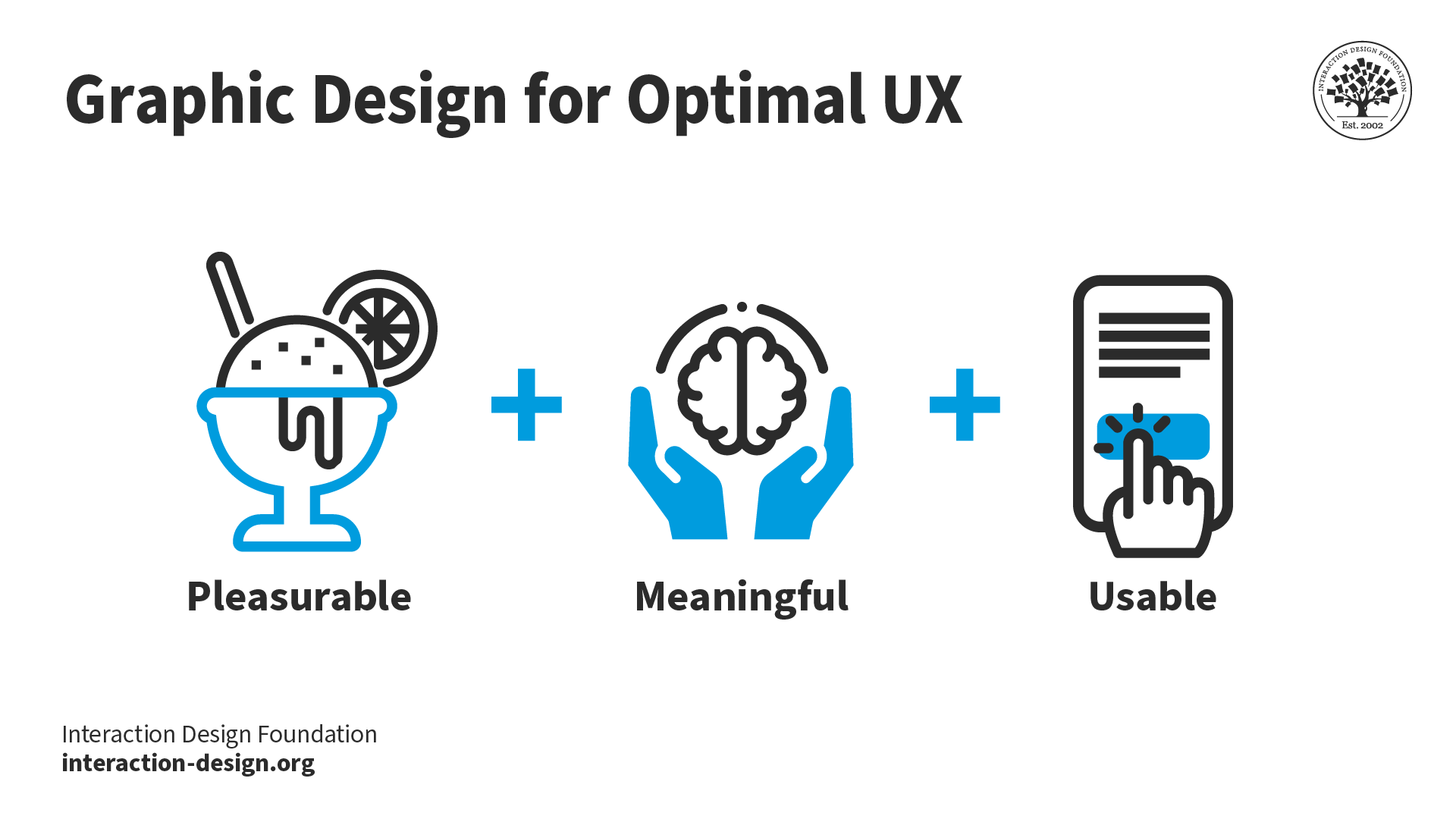
Graphic Design is Emotional Design
Although to work in the digital age means you must design with interactive software, graphic design still revolves around age-old principles. It’s crucial that you strike the right chord with users from their first glance—hence, graphic design’s correspondence with emotional design. As a graphic designer, you should have a firm understanding of color theory and how vital the right choice of color scheme is. Color choices must reflect not only the organization (e.g., blue suits banking) but also users’ expectations (e.g., red for alerts; green for notifications to proceed). You should design with an eye for how elements match the tone (e.g., sans-serif fonts for excitement or happiness). You also need to design for the overall effect, and note how you shape users’ emotions as you guide them from, for instance, a landing page to a call to action. Often, graphic designers are involved in motion design for smaller screens. They will carefully monitor how their works’ aesthetics match their users’ expectations. They can enhance their designs’ usability in a flowing, seamless experience by anticipating the users’ needs and mindsets. With user psychology in mind, it’s important to stay focused on some especially weighty graphic design considerations, namely these:
- Symmetry and Balance (including symmetry types)
- Flow
- Repetition
- Pattern
- The Golden Ratio (i.e., proportions of 1:1.618)
- The Rule of Thirds (i.e., how users’ eyes recognize good layout)
- Typography (encompassing everything from font choice to heading weight)
- Audience Culture (regarding color use—e.g., red as an alert or, in some Eastern cultures, a signal of good fortune—and reading pattern: e.g., left to right in Western cultures)
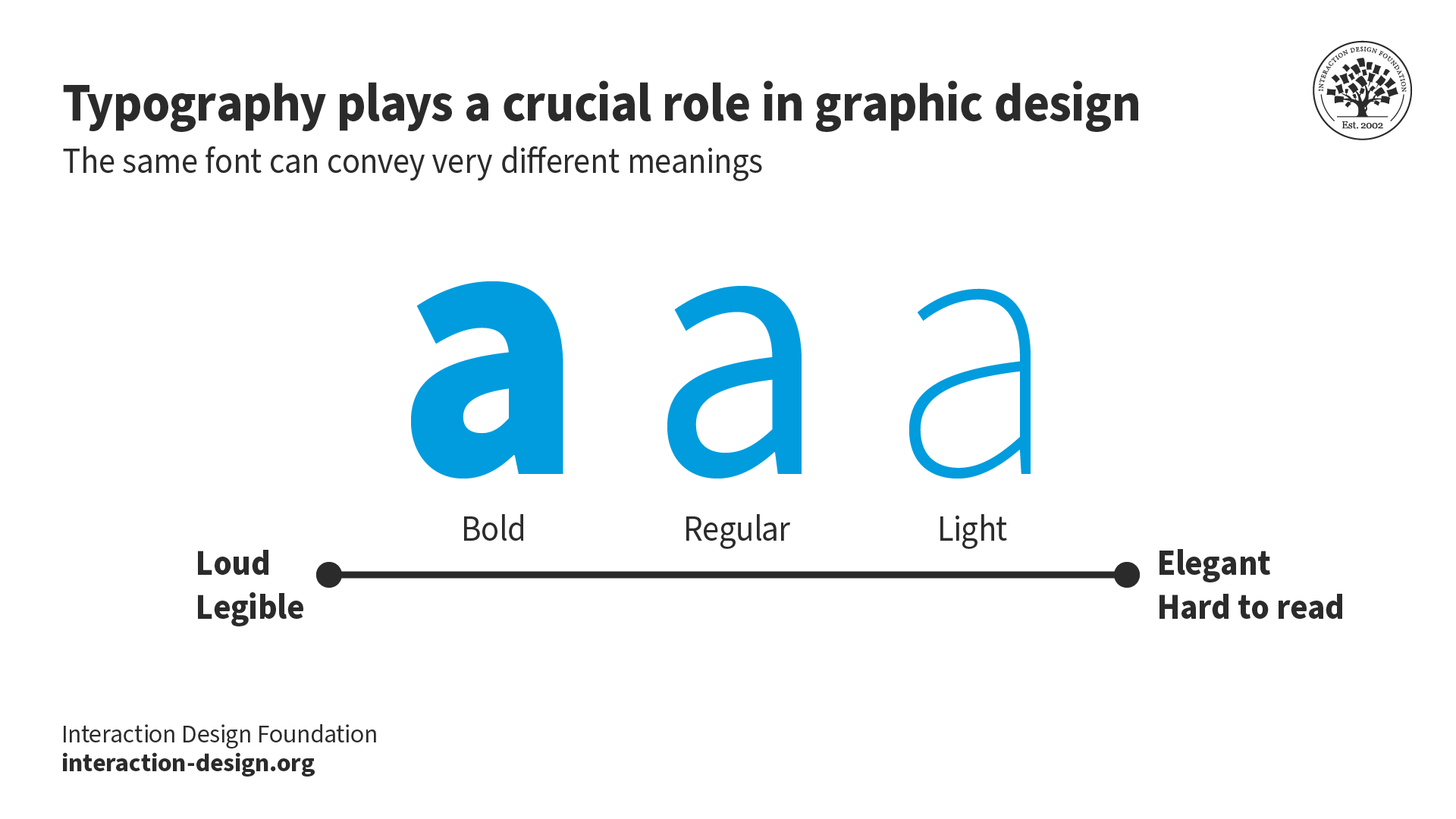
Overall, your mission—as far as graphic design goes in UX and UI design—is to display information harmoniously. You should ensure that beauty and usability go hand in hand, and therefore your design can discreetly carry your organization’s ideals to your users. When you establish a trustworthy visual presence, you hint to users that you know what they want to do – not just because you’ve arranged aesthetically pleasing elements that are where your users expect to find them, or help them intuit their way around, but because the values which your designs display mirror theirs, too. Your visual content will quickly decide your design’s fate, so be sure not to overlook the slightest trigger that may put users off.
Learn More about Graphic Design
Take our course, The Ultimate Guide to Visual Design.
Our encyclopedia addresses graphic design’s place in the world of UX.
This is a first-hand account on transitioning from graphic design to UX design.
Read this incisive piece that examines the similarities and differences between graphic and UX design.
Questions related to Graphic Design
How much do graphic designers make?
The salary of a graphic designer can vary widely based on several factors, including experience, geographical location, and expertise level. On average, the annual salary for graphic designers ranges between $43,000 and $66,000. This range reflects the earnings of many professionals in the graphic design field, a profession that remains essential and valued across various industries.
While graphic design offers a respectable salary, professionals seeking higher earning potential might transition to UX design. UX designers responsible for crafting user-friendly and functional digital interfaces are in high demand, leading to attractive compensation packages. For graphic designers considering a career change, transitioning to UX design can be strategic. Learn more about the benefits of this transition and how to navigate it in this detailed guide on changing your career from Graphic Design to UX Design.
What do graphic designers do?
Graphic designers are creative professionals who use their artistic skills to create visual content for various mediums. They work on projects such as designing logos, brochures, websites, and advertisements. Using various tools and software, they aim to communicate a message through their visual designs and help businesses and organizations achieve their goals.
What is the difference between graphic and visual design?
Graphic design and visual design are often used interchangeably, but there is a subtle difference between the two. Both graphic and visual designers rely on design principles and knowledge of color theory, typography and layout to create effective and engaging designs. Graphic designers primarily focus on communication (for example, logos and advertisements) while visual designers focus on product experience (for example, the user interfaces of websites and applications). Visual designers may incorporate graphic design elements to create a consistent user experience across all touchpoints.
Graphic design is a much older profession and has a strong association with print media. With the advance of technology, graphic designers’ deliverables also became digital. Visual designers have a broader skill set, combining skills of graphic designers along with an understanding of interface designer.
If you’re interested in learning more about these important design principles, check our visual design course. Develop the skills you need to create stunning designs that are both functional and visually appealing.
How to become a graphic designer?
In addition to possessing a degree in graphic design or a related field, there are excellent online courses available that can provide you with all the essential visual skills you need. Platforms like Skillshare, Udemy, and Coursera offer a variety of courses focused on developing practical skills and building portfolios. These flexible and affordable courses provide a fantastic opportunity to learn graphic design and grow your skills.
If you’re interested in pivoting to interaction design, there are fantastic courses available that can help you change your career to UX or a related field. There are even tailored learning paths available to guide you in your journey. Best of luck on your chosen career path!
Is graphic design a good career?
Yes, graphic design can be a great career choice for those with a passion for creativity and design. With the rise of digital media, the demand for skilled graphic designers has grown. However, it’s important to note that the field is competitive and requires continuous learning and development of skills.
Graphic designers can work in a variety of industries, from advertising to web design, and can have a range of job titles, such as art director or multimedia designer. Overall, graphic design can be a fulfilling and rewarding career path for those willing to put in the work.
How do you learn graphic design?
Learning graphic design involves understanding design principles, mastering software, and developing a strong portfolio. Start with online courses or a design school to learn the fundamentals. Practice by creating designs and seeking feedback. Most importantly, build a strong portfolio.
Visual design and graphic design are closely entangled. If you’re interested in becoming a visual designer, consider this Visual Designer Learning Path for comprehensive courses and resources.
How to make a graphic design portfolio?
Creating a graphic design portfolio involves selecting your best work, showcasing a variety of skills, and presenting them professionally. Include high-quality images of your work, a brief description of each piece, and the process involved. Make sure to include visuals in your portfolio, as explained by Michal Malewicz, Co-founder of HYPE4.com, in this video about the importance of visuals in your UX portfolio.
Showvideo transcript
- 00:00:00 –> 00:00:33If you want the recruiters to pay attention to what you’re doing to your work, you need them to be interested. And to get them interested, you need some *visuals*; that’s the whole thing. And this is all because we really need to sell ourselves. Now, the world is really crowded; there are a lot of designers out there; there’s a lot of competition, and we need to stand out from that competition because otherwise people are simply just going to browse through our portfolio or our resume very quickly and just get over it because they have a lot of those to go through.
- 00:00:33 –> 00:01:01This year, I went through over 250 case studies on Twitter with junior designers sharing their case studies and also sharing their problems. And many of them had the problem of having a portfolio with a couple of case studies and those case studies were very thorough because they finished some courses, they finished some classes or some university classes, and they had pretty big case studies; they had pretty much everything – you know – like if you were checking off a list: Personas, check;
- 00:01:01 –> 00:01:30Empathy maps, check – like, everything was there. But they all had this problem of almost never getting any replies. And they weren’t really understanding what’s the problem there. Like, it’s really checking all the boxes – there’s a lot of content there; it shows thorough research; it shows data; it shows tables, graphs, charts, everything. So, what is the problem? The problem that we notice is that a typical case study is really, really academic,
- 00:01:30 –> 00:02:03which means that it’s pretty much boring – so, that’s like the whole thing. It’s really, really long, and it’s really filled with a lot of content. And those people, those recruiters have *limited time* to assess those case studies. So, they go through a lot of those case studies by just quickly scrolling through. And if there is nothing that catches their eye in there, it’s really, really bad because they have seen probably similar things in the dozens the same day. And that results in the TL;DR effect,
- 00:02:03 –> 00:02:31which basically means ‘Too Long; Didn’t Read’, and this is something that really is happening. Even the people who are tasked to evaluate case studies don’t really read all of them. So, you can help your luck by a concept that I call the *UI Sandwich* which basically means – *keep the whole case study*. You don’t really need to remove anything. It can be super long if you want. But *add a very, very pretty visual on the top* like a key visual.
- 00:02:31 –> 00:03:03And one tip is to *always rotate it a little bit diagonally*. That’s why probably you’ve seen this on Dribbble quite a lot – that people rotate their screens a little bit. But the thing is that this key visual is very image-heavy. It shows a couple of screens; it shows some additional decorative elements, and this kind of brings the engagement way, way up, and this keeps that person interested in finding out more of what you did in the project. So, that UI kind of primes them to actually read the rest of the case study.
- 00:03:03 –> 00:03:32And then once they get to the end of it, you *add another visual*, just not the same one, because some people actually started doing it this way. So, add a different one, and it still has to be a larger visual to have like a nice sandwich of all the TL;DR stuff between the nice-looking visuals. And that has proven to actually work because those people that had problems with their case studies reported seeing that they are now getting responses
- 00:03:32 –> 00:03:35– they are now getting interviews.
Regularly update your portfolio with new work to keep it current.To learn more about creating an impressive portfolio, consider taking this course on How to Create a UX Portfolio.
Is graphic design hard?
Graphic design can be challenging, requiring creativity, attention to detail, and technical knowledge. However, like any skill, it becomes easier with practice and proper training. Don Norman explains in his video that designers, including graphic designers, need to understand the business, politics, and socio-technical systems to make meaningful changes.
Showvideo transcript
- 00:00:00 –> 00:00:31How do we convince a company to change from making products to doing services? They’re going to need different kinds of people. They’re going to need a different manufacturing process. They’ll need to have a big section that maintains and upgrades the things that they are selling. They’ll need to have service people. That’s one problem.
- 00:00:31 –> 00:01:02Second problem – it might cost a lot more money to change the way we make things so we don’t take the materials and make them so nice and wonderful and thin and mix them together to be a good feel. No, we might have to make our equipment slightly thicker. You know, if we had a slightly thicker phone, we could make it easy to repair the battery. Just open it up and put in a new battery. Is that a big price to pay? Not necessarily.
- 00:01:02 –> 00:01:31In fact, people often complain about the relatively short life of the battery in a mobile – it may not even last the whole day. Well, if the mobile was slightly thicker, we could put in a slightly bigger battery and the phone would last longer; the battery would last longer every day. Why don’t we do that? Well, because we put aesthetics over usability. Well, we’re going to have to change that model too. Now, some companies may complain that, yes,
- 00:01:31 –> 00:02:02they will say what you’re trying to propose is very good but it will cost us more money to make the change, and it would cost us more money – we have to charge more money for our products or our services, and that makes it uncompetitive. And they’re right. So, if you are a designer and you just say, “What we are doing in the company is bad for the environment; we should change,” you can’t go to your superior executives and say, “Hey, Executives, what we’re doing is bad for the economy,
- 00:02:02 –> 00:02:33bad for the world. We have to change the way we’re doing things!” They’re not going to be happy to hear that, not if you tell them it’s going to cost more money; it may completely change their line of business. So, we have to therefore understand the nature of business before we make this change. We have to say, “Here is a proposal that will help us make this change in a way that actually keeps us still alive, robust, performing as a company; if you like,
- 00:02:33 –> 00:03:03we have to take the principles of sustainability and robustness and resilience and apply it to the very company that we work in so it can have these properties and do good for the world.” But that means you have to speak the language of business. Now, design has a very important philosophy in it which means: *Understand the people you are designing for. Speak their language. Make sure it fits their needs.* Well, if you work in a company,
- 00:03:03 –> 00:03:30one of the people you’re designing for is the executives of the company because you’re designing for the company in order for the company to *succeed*, because if a company can’t succeed, if a company can no longer produce stuff that is useful or inexpensive enough for people, it goes out of business and then you’re out of a job; so, it doesn’t do any good to recommend something that makes the company fail.
- 00:03:30 –> 00:04:02But in order to understand that, you have to understand how a business works. So, *design has to change*. For the first time, you have to understand the politics of a company, the business model of a company; you have to understand the world; you have to understand the impact your products have upon the ecosystem of the world and the complex socio-technical system. Remember that word – the *complex socio-technical system* in which the company is involved. So, designers, you have an important role to play.
- 00:04:02 –> 00:04:07In order to play that role, you’re going to have to change the way that you behave.
This broad understanding and the ability to speak the language of business are essential for a successful career in graphic design.
If you’d like to learn more, take this course on Design for a Better World with Don Norman.
What is graphic design in art?
Artistic graphic design encompasses the creation of visual elements using typography, images, and colors to effectively convey a message or provide a solution to a problem. It encompasses various disciplines like layout design, logo design, and branding.
While graphic artists create original artwork, graphic designers use these artworks and other visual elements to create designs that convey a specific message. Learn more about the differences between graphic artists and graphic designers in this article: Graphic Artist vs Graphic Designer: What’s the Difference?
What does a creative designer do?
A creative designer is responsible for creating visuals across various mediums to communicate messages effectively. They conceptualize and design graphics, layouts, and visual effects to engage target audiences. Their work includes creating logos, marketing materials, website designs, and other visual content.
They also collaborate with other team members and clients to ensure the design aligns with the overall goals and brand identity. Read more about the role of a creative designer in this article: What Does a Creative Designer Do?
Visual Design: The Ultimate Guide

Visual Design: The Ultimate Guide
Closes in
15
days
booked
View Course
Get Weekly Design Insights
Join 321,175 designers who get useful UX / UI Design tips from our newsletter.Go
Earn a Gift, Answer a Short Quiz!
- Question 1
- Question 2
- Question 3
- Get Your Gift
Question 1
What is the primary focus of graphic design?
1 point towards your gift
- To create aesthetic-only visuals that may not necessarily communicate a message.
- To develop visual content that effectively communicates specific messages.
- To focus solely on the digital aspects of design without involving traditional media.
Submit my answer

Literature on Graphic Design
Here’s the entire UX literature on Graphic Design by the Interaction Design Foundation, collated in one place:Featured article
How to Change Your Career from Graphic Design to UX Design
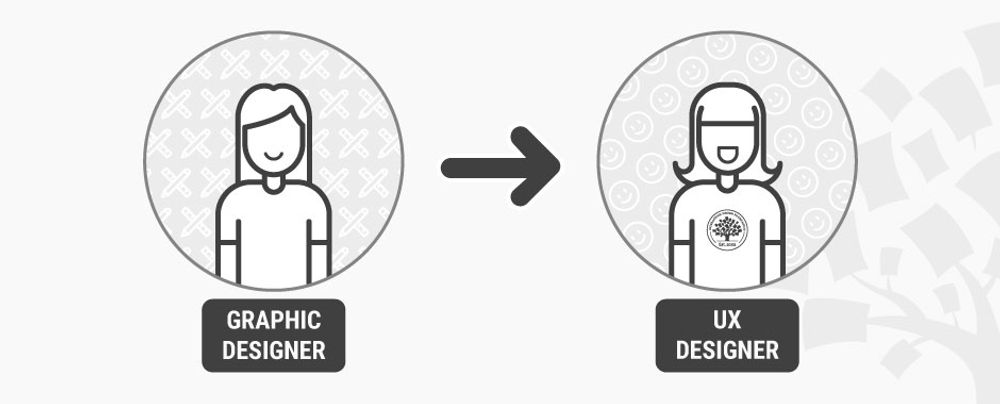
If there’s an occupation that is 100% linked with the public’s idea of what design is all about, it’s graphic design. From the familiar golden arches of the McDonald’s brand to the typography and colors of movie posters, graphic designers create some of the most iconic and ubiquitous designs around us. So why would a graphic designer like you want to change your career to UX design? Well, for one, much can be said about the sense of satisfaction and fulfillment derived from getting “under the hood” of the products you work on rather than working on the exterior. Furthermore, according to PayScale, the average salary for a graphic designer in the United States is $41,000(1), but the same for a UX designer is a whopping $74,000(2).Whatever the reason for the move, it’s clear that it can be a very rewarding one. But how do you go about switching from graphic design to UX design? Let’s find out.
What is User Experience and User Experience Design?
The user experience (UX) is what a user of a particular product experiences when using that product. A UX designer’s job is thus to create a product that provides the best possible user experience. How does that happen?
Well, it starts with a lot of research. You can’t create anything of value to a user unless you understand what kind of problems they want to solve and how you can solve those problems, so that the user will want—or better still, need—your solution. You can only get that understanding by interacting with users.
UX designers tend to be concerned with, as you can see from the image below, 3 primary factors: the look of a product, the feel of that product and the usability of that product.
The look of a product is all about creating a product that has visual appeal and which, in particular, harmonizes with a user’s values and captures the spirit of what they expect in that product. In other words, it has to not only look nice, but look right too. In doing so, it establishes a bond of trust and credibility between the product and the user.
Next is the feel, which is really about developing products that are “a joy to use”. That is, whether you’re interacting with them or reacting to them, products should provide a pleasurable experience and not just a functional one.
Lastly, usability is the cornerstone of user experience. If a product isn’t usable, the experience of using it can never be good. UX designers want to create products which can, ideally, be tailored to meet a user’s specific needs, but which provides functionality that is predictable.
If you’re still unsure of what UX design is all about, don’t worry! We’ve got a series of articles which may help you make up your mind—they examine some of the high-level key concepts of UX design in a bit more detail than we can here:
What Do Graphic Design and UX Design Have in Common?
Emotional Design
Graphic design is about emotional communication through typography, color and images; serif fonts and dark, duller colors evoke seriousness, while san-serif fonts and bright colors tend to bring out a sense of joy or excitement. Graphic designers are hence very often emotional designers who elicit specific reactions in a user. UX design is also concerned with shaping the emotions of the user, although it tends to take a broader, big picture view of the entire user’s experience with the product. On top of focusing on the right typography and colors, UX designers are also concerned with motion design, the tone of the content, and information architecture, among others.
Creative thinking
Graphic designers and UX designers are both equally skilled at creative thinking. For graphic designers, creating visuals that adhere to conventions (and thus communicate effectively) while retaining a sense of originality (to stand out among the competition) requires some serious creative and critical thinking. In the same way, UX designers have to create products that solve users’ problems—and sometimes, conventional solutions aren’t always the best or most appropriate ones.
Prototyping
Graphic designers often create mockups and wireframes of their designs prior to delivering a finished design. It gives a chance for clients to offer feedback on their designs and for them to improve them without having to start from scratch. UX designers create mockups and prototypes too, but these tend to be less focused on the “look” of the product and more on the “feel” of it. Is the prototype useful? Is it usable? Is it desirable? These are the questions a UX designer wants answers to.
The Differences between Graphic Design and UX Design
User-focused vs pixel-focused
Graphic designers tend to pursue pixel perfection in their designs. Ensuring that texts have perfect kerning and colors conform to brand guidelines often take up a significant portion of graphic designers’ jobs—and for good reason, too. UX designers, however, are primarily focused on users. They study the interface between users and the product, finding ways to ensure that the product answers to the user’s key needs. And they do so by conducting a lot of research—by talking to and observing users, creating user personas and stories, doing usability testing on the products, and many more. Graphic designers looking to switch career tracks will need to do a substantial amount of work finding out how to conduct user research (more about this a bit later on in the article).
Iterative problem solving
UX design is very much an iterative problem solving process, and it can be very different from what you’re used to doing as a graphic designer. It begins with the identification of a problem; this is often found through user research, and if it’s not, it will then be confirmed through user research. There is no point in solving problems that users don’t care about; they won’t pay to solve those problems, and that means your company won’t make money.
From the problem identification stage, more research is conducted into how best to solve the problem in a way that the user will be happy with—usually via observations, surveys, ethnographic studies, etc.
This research then informs the product’s design. Designs are then tested with users to see if the research led to the right solutions. The designs are constantly iterated until research confirms that they are good enough.
Once this happens the product is launched, but the design process is not over. The design will be continually tested and user feedback will be taken, thus beginning a new round of user research. Future improvements to the design will be made based on this feedback.
Multi-disciplinary vs specialized
Graphic design is a specialized discipline, and there is a certain level of craftsmanship and set of specialized skills (such as typography and color theory) required to produce great visuals. UX design, on the other hand, is much more multi-disciplinary and involves many schools of knowledge. UX designers have to constantly learn about human psychology, interaction design, information architecture and user research techniques, just to name a few, in order to create the right solutions to a user’s problems. Don Norman, the man who coined the term “User Experience”, explains that user experience covers “all aspects of the person’s experience with the system including industrial design graphics, the interface, the physical interaction and the manual.”
The Big Benefit of Graphic Design Experience when Moving to UX Design
Aesthetics
The biggest benefit for graphic designers moving to UX design is that they can make things attractive. A very common misconception about UX design is that good usability trumps aesthetics. On the contrary, good aesthetics have been found to improve the overall user experience of product—by making users more relaxed, creating a positive first impression, and generally just showing that you care(3).
Aesthetics also help designers communicate with the internal stakeholders in their companies. Ex-graphic designers can present research results in a way that makes stakeholders sit up and really take notice. Graphic design skills are often thought of as optional in UX research, but it would be hard to deny the impact of well-presented beautiful findings. If you do make the change, you’ll need to balance your tendency to make things gorgeous with the need for moving your design projects forward. There are times in UX design when a few scribbles on the back of a napkin are more than enough to get things going; don’t spend 3 days producing a poster when this is the case.
Conventions and trends
Coming from a design background not only means having a good grip on design terminology, but also that you’re likely to be familiar with the conventions and trends in web or app designs. Most times, UX designers make use of standardized conventions (like a toggle switch for on/off states, dropdown list for multiple options, etc.) because users have come to expect these interactions on a website. Graphic designers—especially if you’ve created prototypes in the past—are also familiar with such conventions. That means you’ll adapt more quickly to a UX design role than someone who comes from a non-design background. This might not sound like much, but communication is the core of any UX design project and being able to talk-the-talk is a big benefit.
How to Enhance Your Skills to Make the Jump from Graphic Design to UX Design
Is there a gap between graphic design skills and UX design skills? Yes, but it’s not an insurmountable one. Graphic designers already speak the language of design; they just need to brush up their skills to include those that are unique to UX design.
Once you have those skills, you can start to work them into your graphic design work (because user experience design can inform graphic design just as much as it can inform product design) and start to tailor your CV to highlight your UX skills as well as your graphic design skills.
As we mentioned above, the real key for graphic designers is to understand user research in all its forms. All the courses we’ve highlighted below should address this need to a greater extent.
Online Courses
Interaction Design Foundation
We’d like to modestly present our own course offerings for this, as the Interaction Design Foundation is the world’s largest specialist design education community. Don Norman, the same man who coined the term “User Experience” and who is one of the world’s best known designers, says that we’re “a goldmine of information on interaction design”; Forbes magazine says we supply an Ivy League level of UX design education!
There are three courses that we have put together specifically with a career change or first job in UX design in mind. In User Experience: The Beginner’s Guide, you’ll be introduced to all areas of UX work, learn basic practical skills to conduct UX work, and gain the confidence to work with UX clients as a consultant. In Get Your First Job as a UX (or Interaction) Designer, you’ll find out how to get the experience in UX that prospective employers are looking for, learn to develop a winning cover letter, CV and portfolio to get a UX interview, and negotiate a job offer. And in User Research – Methods and Best Practices, you’ll learn the various methods of conducting user research, and then putting the research results into action.
We also offer a bunch of other courses (32, and constantly growing!) to help you further develop your skills in UX design. The good news is that with a low annual fee, you get access to all of our courses for a year with no additional charges, and you get access to our community too.
You can find out about our other courses here.
Coursera
You might also want to try the folks at Coursera.org, which is a low-cost but high-quality education provider which delivers courses on a wide range of subjects including UX. It does partner with universities and companies to offer courses, Professional Certificates, and degrees, and courses are generally very good. All content on the platform, with the exception of degrees, is available on demand. It’s also worth noting that their degree programs are only available for new applications during set windows. They also recently launched a Google UX Design Professional Certificate to help learners build job-ready skills in under six months.
Udemy
Udemy is the world’s biggest broker of training. They don’t design their own training; rather, they enable course creators to sell their courses on their platform. They offer literally thousands of courses in almost any conceivable subject. The trouble is that Udemy provides no quality control, and while you can find some great courses there, there are a lot of not so great courses too.
Classroom Courses
Nielsen Norman Group
If you have deeper pockets and would prefer to learn in a classroom than learn online, then you might want to check out the classroom courses offered by the Nielsen Norman Group. The group has an excellent reputation and is one of the world’s most respected UX consultancies. They offer their courses in a range of locations, but we can’t guarantee that you’ll find one on your doorstep and you may have to travel some distance to take part in them.
General Assembly
We also think that General Assembly has a great reputation for providing immersive classroom training for UX design. Once again, it’s not cheap but that is always going to be true of professional classroom training. You can choose between part-time or full-time courses. As they’re short, they repeat every few months. They are, however, available only at select locations, and you’ll need to factor travel and living expenses into the total cost, in case you don’t live nearby.
University Courses
We’re not sure that university is the best option for those seeking a change of career direction; it’s not just the money required, but also the time taken. You could be earning and learning using a different method rather than spending 3 or 4 years on a bachelor’s degree or 2 years on a Master’s program. However, if you do decide to go the university route, you’ll want to spend a lot of time researching exactly the right program for you. We’ve got a couple of examples for you here but there are literally hundreds of programs globally and we couldn’t hope to cover them all.
Carnegie Mellon – HCI Programs
York University – MSc in HCI Technologies
We’d urge that you sit down with a calculator and think about the costs associated with going to university before booking a place. HSBC, as reported by Top Universities, found that the average US university course will cost you $36,564 a year (including rent, tuition, books, etc.). (4) Over a 4-year degree, that means shelling out a cool $146,256—and that’s without the costs of a loan to cover those expenses.
But that’s not all—you’ll also have to give up full-time work. According to the US Census Bureau, a non-graduate earns an average of $27,351 per year.(5) This gives us a 4-year opportunity cost (that is, the income that you’ve forgone while in university) of $109,404. That means 4 years at university will set you back a huge $255,660!
If you don’t know which kind of learning to invest in, that’s OK. We know it can be confusing trying to work out what will add the most value to your career. With that in mind, we’ve put together a piece that walks you through calculating the Return on Investment in learning here; hopefully that will help you decide what’s right for you.
Networking
Once you’ve brushed up your skillset and you feel you’re ready for that first UX role, you might find handy to do some networking. The best opportunities are almost always found when someone already in the field recommends you for a position. One of the best places to start with your networking is LinkedIn. Join some UX groups, start contributing, and build that all important network with your peers. But take it slow; don’t just show up and start asking for a job. You need relationships with people before they will help.
We also offer some awesome networking opportunities to both our members and non-members too. Members can join our global community of UX professionals in the many discussion groups and forums that we provide; we have the largest specialist design community on earth so there are plenty of opportunities to be uncovered there. For members and non-members, we also have local group meetings in many places around the planet. These meetings are completely free to attend and are a great way to meet people doing UX in your home town or city. Find out more at our Community page.
One other useful way to start networking is to follow famous members of the UX design community on Twitter. Not only will you learn a lot from them, you can also interact with their followers (who are likely to be designers like you too). We’ve put together a list of twenty people you should follow on Twitter in the UX sphere here to get your started.
Mentoring and Feedback
Another great way to develop your career is to work with a mentor in the UX field who has “been there, done it and bought the t-shirt”, at least so to speak. You may find a mentor through your own network nd that’s an awesome way to connect with a mentor, but if you can’t then our IxDF Design League members can access our network of design mentors as part of their annual membership fee.
The Take Away
If you want to change from graphic design to UX design as a career, that’s awesome. It’s not going to be as difficult as you might think either. You just need to get a little training under your belt so that you’re familiar with what it is a UX designer does, and then you can put some of those techniques to work in your current role. Then when you think the time is right, you can start networking and lining up some interviews for your new job!
References & Where to Learn More
- Payscale’s research on Graphic Design salaries
- Payscale’s research on UX Design salaries
- UX Myths: Aesthetics are not important if you have good usability
- How much does it cost to study in the US?
- Earnings by education: US Bureau Of Labor Statistics
Show full article
Learn more about Graphic Design
Take a deep dive into Graphic Design with our course Visual Design: The Ultimate Guide .
It’s Easy to Fast-Track Your Career with the World’s Best Experts
Master complex skills effortlessly with proven best practices and toolkits directly from the world’s top design experts. Meet your experts for this course:
- Mia Cinelli: Associate Professor of Art Studio and Digital Design at the University of Kentucky.
- Joann Eckstut: Color Consultant, Founder of The Roomworks, and one of the 12 designers chosen by the Color Association of the USA to create the yearly forecast used by industries to keep up with color trends.
- Arielle Eckstut: Author, Agent-at-large at the Levine Greenberg Rostan Literary Agency, and Co-Founder of The Book Doctors and LittleMissMatched.
Visual Design: The Ultimate Guide

Visual Design: The Ultimate Guide
Closes in
15
days
booked
View Course
All open-source articles on Graphic Design
Order by: Most shared in this topic Latest UX literature in this topic 10 Great Sites for UI Design Patterns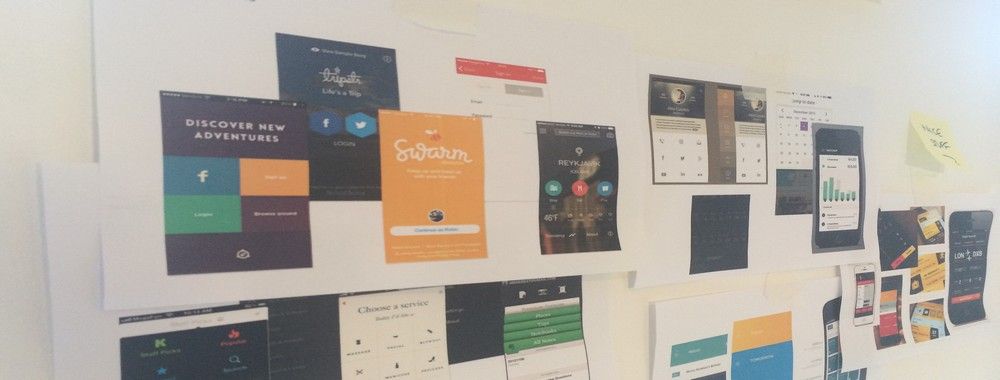
10 Great Sites for UI Design Patterns
You don’t want to spend your whole life redesigning the wheel, do you? No, neither do we. If you are looking for a desig
- 1.4k shares
- 4 weeks ago
Read article5 Steps to Creating Your Freelance Design Brand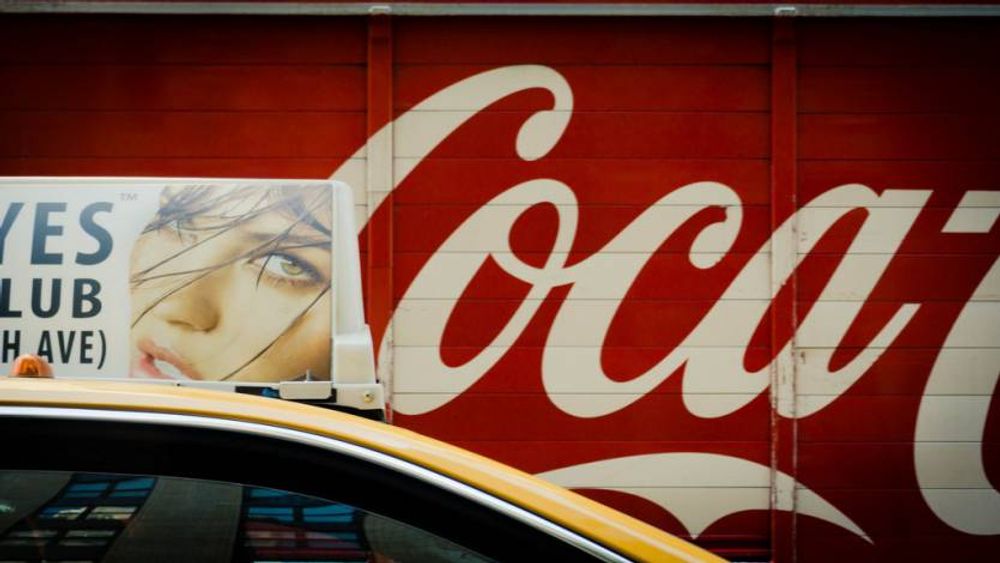
5 Steps to Creating Your Freelance Design Brand
This might sound like teaching your grandmother to suck eggs but in our experience a lot of incredibly talented designer
- 606 shares
- 9 years ago
Read article10 Great Reasons to Go Freelance (Things You Might Not Have Considered)
10 Great Reasons to Go Freelance (Things You Might Not Have Considered)
If you’re toying with the idea of going freelance; you’ll already know some of the benefits. Getting rid of the commute
- 672 shares
- 5 years ago
Read article10 Simple Ideas to Get Your Creative Juices Flowing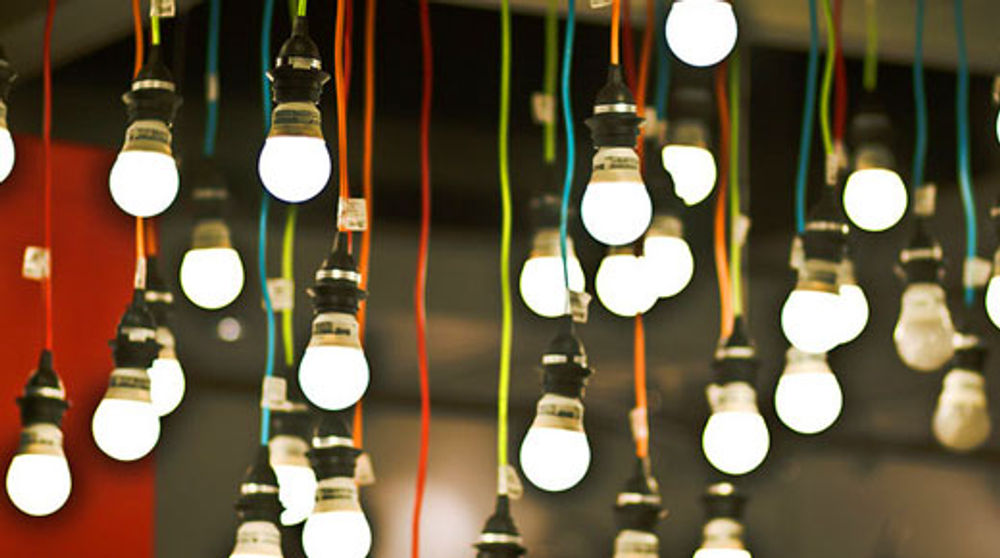
10 Simple Ideas to Get Your Creative Juices Flowing
Writers deal with writer’s block and designer’s often find that they get stuck for ideas too. There’s no shame in it but
- 865 shares
- 5 years ago
Read articleProduct Thinking is Problem Solving
Product Thinking is Problem Solving
It can be easy to get bogged down in developing features when we get into user experience design. It’s not that features
- 948 shares
- 2 years ago
Read articleRecalling Color Theory Keywords: a way to refresh your memories!
Recalling Color Theory Keywords: a way to refresh your memories!
Choosing the best combination of colors for an interactive design layout is not, as it may appear, a guessing game. Know
- 1.1k shares
- 5 years ago
Read articleSymmetry vs. Asymmetry – Recalling basic design principles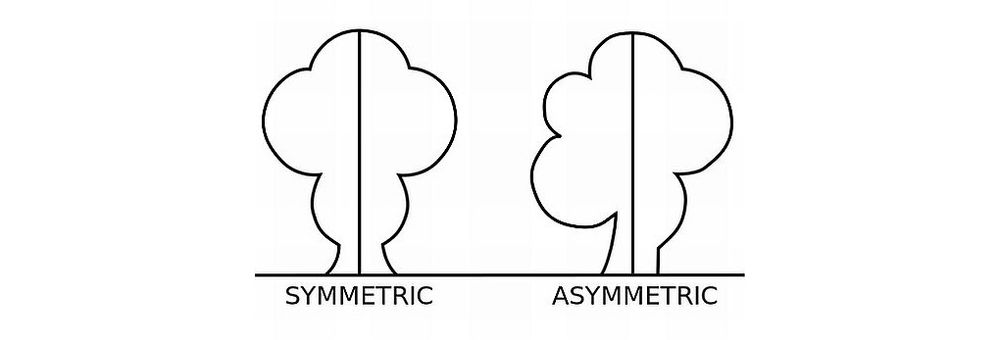
Symmetry vs. Asymmetry – Recalling basic design principles
Now we’re going to look at two powerful design principles that may, at first glance, seem too simple and second nature t
- 1.1k shares
- 5 years ago
Read articleUnicorns, Foxes, Hedgehogs, the UX Design Bestiary
Unicorns, Foxes, Hedgehogs, the UX Design Bestiary
A bestiary is a collection of animals, and we don’t want to imply that anyone involved in the UX design profession is an
- 745 shares
- 4 years ago
Read articleThe Golden Ratio – Principles of form and layout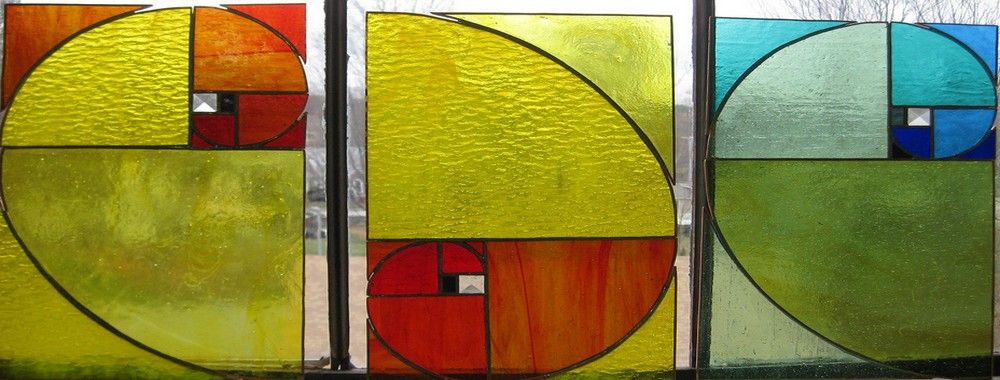
The Golden Ratio – Principles of form and layout
Now, we’re going to look at a subject that comes directly from mathematics and that we can also find all around us – the
- 1.3k shares
- 4 years ago
Read articleRepetition, Pattern, and Rhythm
Repetition, Pattern, and Rhythm
Let’s look at three subjects that, at first glance, may strike you as being incredibly basic and self-explanatory. Howev
- 1.4k shares
- 6 mths ago
Read articleAesthetics and form need to hold hands
Aesthetics and form need to hold hands
This article examines two closely related ideas that are both about looks. Our design world revolves around nice images/
- 671 shares
- 5 years ago
Read articleFlow Design Processes – Focusing on the Users’ Needs
Flow Design Processes – Focusing on the Users’ Needs
It can be really tempting to start a design project by leaping into the deep end and starting to sketch out pages and wo
- 1k shares
- 5 years ago
Read articleWeb Fonts are Critical to the Online User Experience – Don’t Hurt Your Reader’s Eyes
Web Fonts are Critical to the Online User Experience – Don’t Hurt Your Reader’s Eyes
Bill Gates said; “Content is King” and when it comes to the online user experience it is the 100% truth. Delivering a gr
- 891 shares
- 5 years ago
Read articleVision and Visual Perception Challenges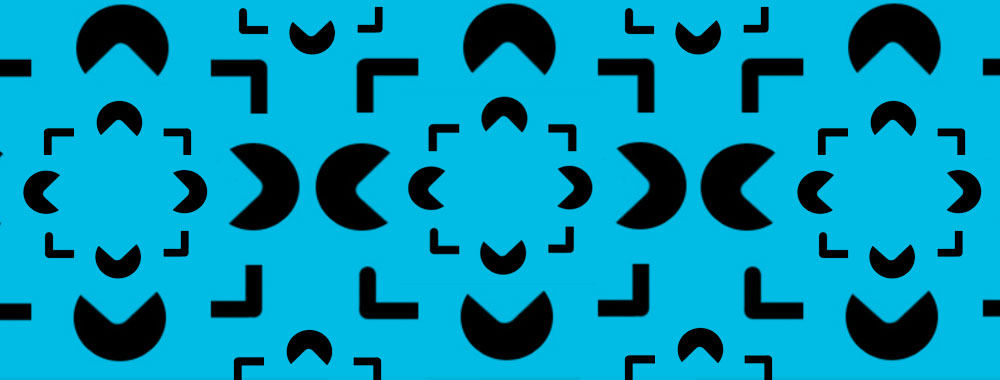
Vision and Visual Perception Challenges
It sounds so simple; take some light and turn it into an understanding of the world around you – we all do it every day;
- 758 shares
- 2 years ago
Read articleHow to Change Your Career from Graphic Design to UX Design
How to Change Your Career from Graphic Design to UX Design
If there’s an occupation that is 100% linked with the public’s idea of what design is all about, it’s graphic design. Fr
- 1.4k shares
- 6 mths ago
Read articleWhat Does a Creative Designer Do?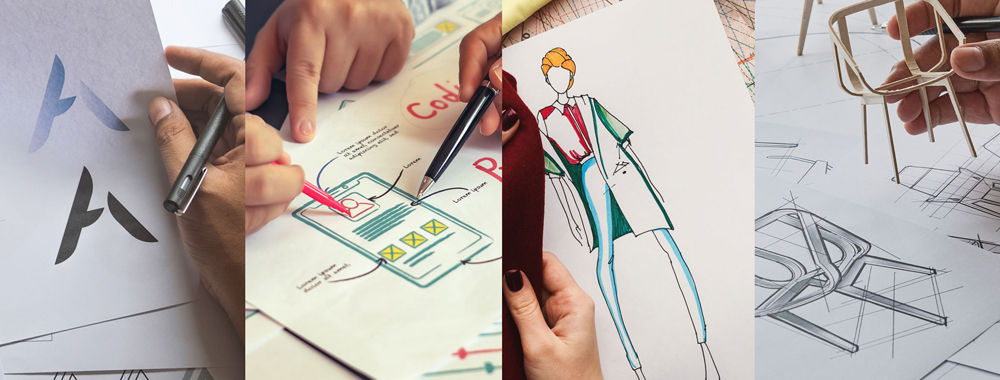
What Does a Creative Designer Do?
Creativity is a massive appeal factor for designers (and those who enjoy what we do!) as they bring to bear their creati
- 714 shares
- 2 years ago
Read articleGraphic Artist vs. Graphic Designer: What’s the difference?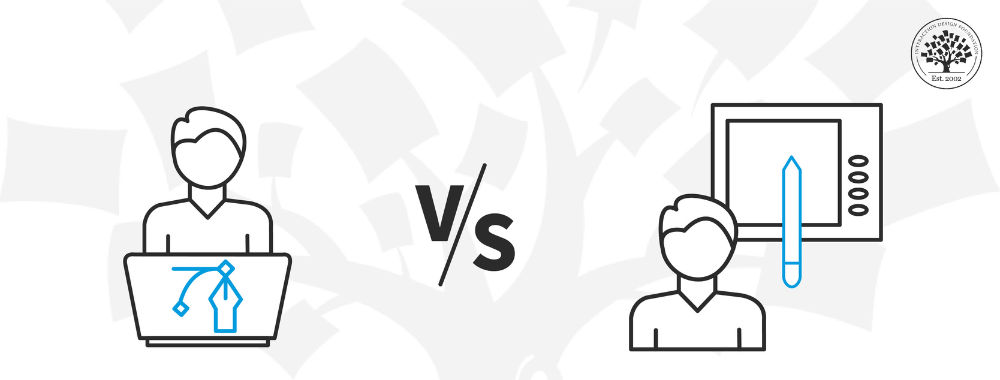
Graphic Artist vs. Graphic Designer: What’s the difference?
Graphic art versus graphic design is pretty much still a bone of contention, and that’s after a long-standing debate tha
- 821 shares
- 11 mths ago
Read articleHow to Become a Digital Designer: The Complete Guide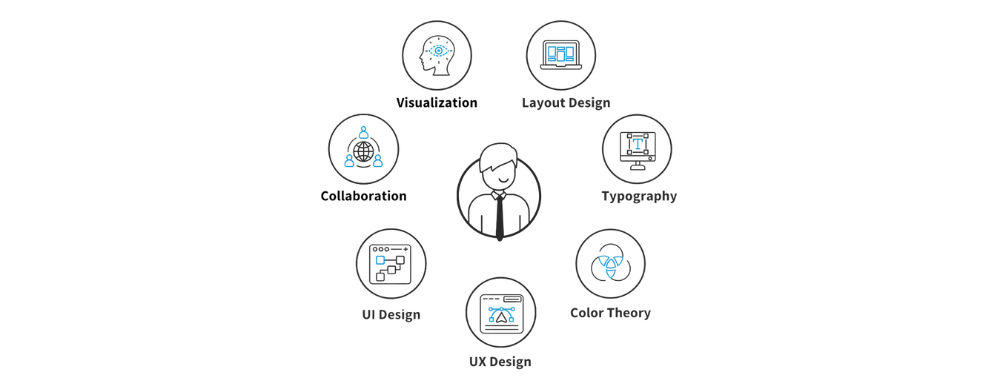
How to Become a Digital Designer: The Complete Guide
In a digital world—for that’s what it pretty much is—what could be more natural than for every brand, company, and digit
- 610 shares
- 2 years ago
Read articleRule of Thirds: The Definitive Guide & Examples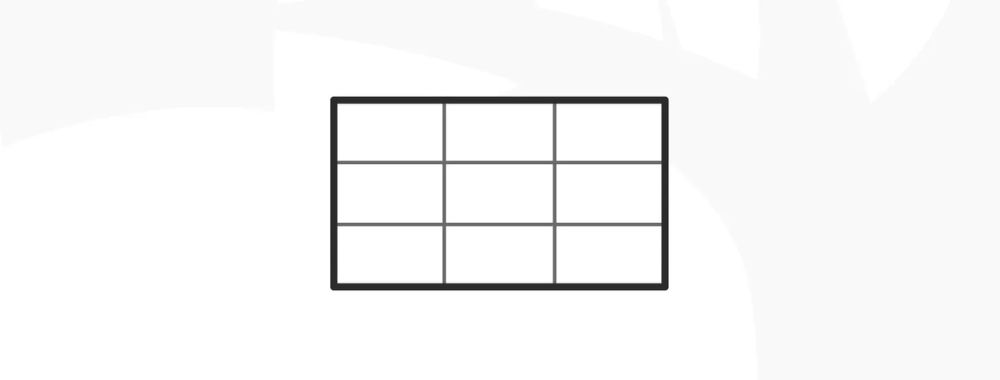
Rule of Thirds: The Definitive Guide & Examples
You may well have seen the “Rule of Thirds” plenty of times at work in a photograph or image on a website and not even r
- 1.3k shares
- 9 mths ago
Read article
Open Access—Link to us!
We believe in Open Access and the democratization of knowledge. Unfortunately, world-class educational materials such as this page are normally hidden behind paywalls or in expensive textbooks.
If you want this to change, cite this page, link to us, or join us to help us democratize design knowledge!
